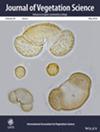Differential Response of Community Biomass Temporal- and Spatial- Stabilities to Nitrogen Addition in an Alpine Meadow on the Tibetan Plateau
Abstract
Questions
Community-level stability includes both temporal and spatial dimensions, yet most research has focused on temporal aspects. While considerable progress has been made in understanding community-level temporal stability (α temporal stability), including its interactions with temporal stability at smaller scales (e.g., population or species level) and broader spatial scales (β and γ temporal stability), our understanding of spatial stability at the same community level (α spatial stability or spatial autocorrelation) and its connections to species-level spatial stability and spatial asynchrony remains limited.
Location
An alpine meadow on the Tibetan Plateau, China.
Methods
Using 5 years of data from a nitrogen addition experiment conducted in an alpine meadow on the Tibetan Plateau, we examine the impacts of nitrogen addition on both temporal and spatial stabilities of community biomass, considering species richness, asynchrony, and stability of all species, as well as of dominant and other non-dominant species.
Results
Nitrogen addition influenced the temporal and spatial stability of community biomass by altering the temporal and spatial asynchrony of dominant species and of the overall species level. In this alpine meadow with high species richness, temporal stability of community biomass increased despite a decline in species richness, while spatial stability of community biomass remained unaffected. These results suggest that dominant species dynamics can enhance temporal stability under nutrient enrichment, even as diversity decreases.
Conclusion
Dominant species play a key role in regulating the temporal and spatial stability of community biomass, and the two dimensions of stability respond differently to nitrogen addition. These findings emphasize the importance of incorporating both spatial and temporal facets of stability into ecological theory and ecosystem management under global change.


 求助内容:
求助内容: 应助结果提醒方式:
应助结果提醒方式:


